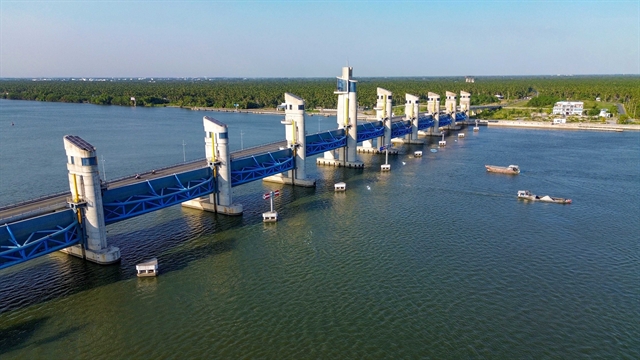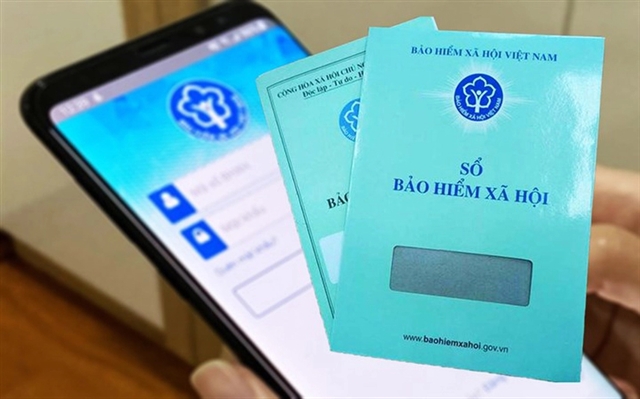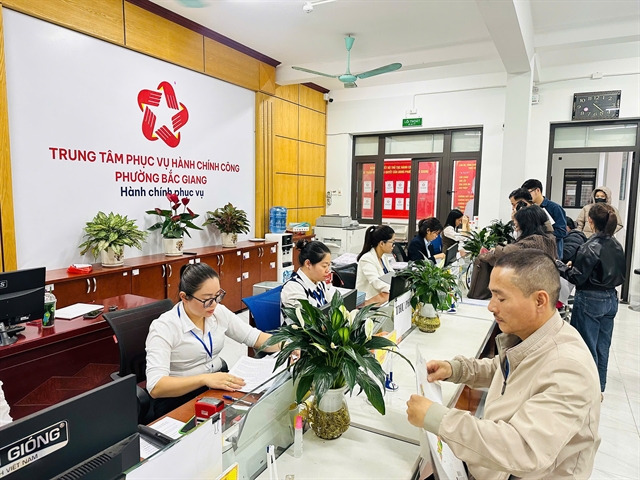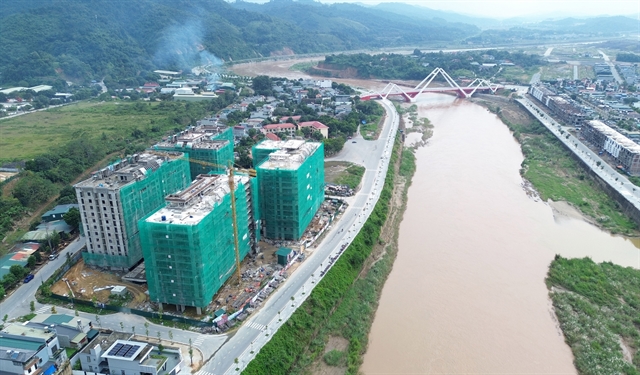 Opinion
Opinion

The 2024 edition of World Environment Day will focus on land restoration, desertification and drought resilience, under the slogan 'Our Land. Our Future. We are #GenerationRestoration', as the year marks the 30th anniversary of the UN Convention to Combat Desertification (UNCCD).
According to the UNCCD, up to 40 per cent of the planet’s land is degraded, directly affecting half of the world’s population and threatening roughly half of global GDP (US$44 trillion). The number and length of droughts have increased by 29 per cent since 2000 – without urgent action, desperate water shortages could affect over three-quarters of the world’s population by 2050. Land restoration is a key pillar of the UN Decade on Ecosystem Restoration (2021-30), a rallying call for the protection and revival of ecosystems all around the world, which is critical to achieve the sustainable development goals.
In Việt Nam, the Ministry of Agriculture and Rural Development’s data estimates that about 15,400-21,500 ha of rice cultivation area in the central region will be affected by drought in the coming months.
 |
| Lương Văn Anh, deputy head of the Irrigation Department under the Ministry of Agriculture and Rural Development.—VNS Photo Tố Như |
Việt Nam News reporter Tố Như interviewed Lương Văn Anh, deputy head of the Irrigation Department under the Ministry of Agriculture and Rural Development about how the ministry is responding to the drought this year.
This year the theme of World Environment Day (June 5) is land restoration, desertification and drought resilience. What is the response from the ministry?
In accordance with the Government's directives and instructions from the Prime Minister regarding coping with droughts, water shortages and saline intrusion, the ministry has issued documents to enhance the implementation of measures to prevent and combat heat waves, droughts, water shortages and saline intrusion. Under the documents, the ministry has instructed the implementation of specific and regionally appropriate solutions.
Specifically, water resources and saline intrusion forecasts for the dry season of 2023-24 nationwide were provided early by the ministry, starting from September 2023 and are continuously updated weekly and monthly, adjusted in case of unusual developments. The forecasts include identifying agricultural areas at risk, as the foundation to take effective response measures, early planting and efficient operation of irrigation systems. Based on these forecasts, localities have developed drought and saline intrusion prevention plans, actively deploying measures in line with the directives of the Prime Minister and the ministry.
The results have shown that all rice-growing areas vulnerable to saline intrusion, along coastal provinces, have adjusted their planting schedules to start early in October and end in December. Through agricultural weather bulletins and water storage guidelines issued by the Crop Production Department and the Irrigation Department under the ministry, fruit-growing areas have actively stored water to ensure adequate supply during periods of high saline intrusion. Currently, all advised crop areas in affected regions are safely protected.
A synchronised approach has been deployed to provide household water supplies to affected households, including providing water storage equipment and tools in the southern province of Cà Mau and the Mekong Delta provinces of Kiên Giang and Bạc Liêu; establishing public water supply points; organising a rotational water supply in the Mekong Delta province of Long An; connecting water supply stations and expanding pipelines in four Mekong Delta provinces of Long An, Tiền Giang, Kiên Giang and Sóc Trăng; drilling additional wells in the Mekong Delta province of Long An; using desalination equipment and salinity monitoring for proper operation of water infrastructure in the Mekong Delta province of Bến Tre.
 |
| MAJOR DEVELOPMENT: An irrigation project to prevent saltwater intrusion to regulate fresh water for agricultural production and daily life of residents in Rạch Giá City and Long Xuyên quadrangular in Kiên Giang Province. VNA/VNS Photo |
The ministry has ordered the acceleration of the construction of Nguyễn Tấn Thành saltwater prevention sluice project, which was started in November 2022 at the beginning of Nguyễn Tấn Thành Canal, in two communes of Song Thuận and Bình Đức in the Mekong Delta province of Tiền Giang. The project is ahead of schedule and expected to be completed in July this year. The sluice aims to contribute to saltwater intrusion prevention, freshwater storage, protecting agricultural production for an area of approximately 12,580 ha and providing water for water supply plants serving around 800,000 people in Tiền Giang Province.
Additionally, the ministry will develop a comprehensive plan to include urgent and long-term solutions, scientific and feasible measures and specific resource allocations for investment and implementation of effective measures to mitigate the impacts of climate change, heat waves, droughts, saline intrusion and address the shortage of freshwater for both domestic and agricultural use then report to the Government in the third quarter of this year.
What are the ministry’s forecasts regarding the situation in the coming months?
Currently, some regions across the country have begun the rainy season, such as the northern region, Central Highlands region, southeast region and Mekong Delta, where the drought and salinity situation has basically ended. Only the central region is experiencing a prolonged dry season extending until the end of July and August this year, so the area continues to face the risk of water shortages and drought in the upcoming period, especially if intense heat occurs, it will lead to a rapid decrease in water reserves in reservoirs.
The central region is currently harvesting the winter-spring crop 2023-24, while some areas in the south central region have started planting the summer-autumn crop. With the impact of heatwaves, water reserves can rapidly decline, increasing the demand for water and posing a risk of drought and water shortage for the summer-autumn crop.
Specifically, the north central region is at risk of being affected by drought, with an area of approximately 6,000-8,500 ha (1,500-2,000 ha in Thanh Hóa Province; 3,000-4,000 ha in Nghệ An Province; 300 ha in Hà Tĩnh Province; 100-500 ha in Quảng Bình; 1,000-1,500 ha in Quảng Trị Province; 100-200 ha in Thừa Thiên Huế Province). The south central region is at risk of being affected by drought with an area of approximately 9,400-13,000 ha (1,800-2,400 ha in Quảng Nam Province; 1,300-1,800 ha in Quảng Ngãi Province; 1,800 ha in Bình Định Province; 1,500-1,700 ha in Phú Yên Province; 2,000-2,100 ha in Khánh Hòa Province; and 1,100-3,200 ha in Ninh Thuận Province).
To mitigate the impact of drought in the central region during the summer-autumn crop, the irrigation department will enhance monitoring of meteorological and hydrological conditions, provided by relevant agencies both domestically and internationally. Then the department will make water forecasts and assess the impacts of drought, water shortages and salinity intrusion on agricultural production and livelihoods to serve as a basis for effective operation of irrigation works.
In the meantime, localities will implement drought response measures under the direction of the Prime Minister and the ministry, actively develop water scenarios, response plans to provide water for people's livelihoods and production.
The department will focus on reviewing and inspecting water sources at irrigation works in the central region, ensuring production only takes place in areas with adequate water supplies; areas with insufficient water will consider delaying production or changing crop structures. It will also coordinate closely with management units, operating hydroelectric reservoirs to develop strict regulation plans, ensuring adequate water supplementation for downstream areas. Priority will be given to daily water supplies, ensuring a minimum water supply for people at risk.
Some people have suggested the need to transfer water from the Đồng Nai River to Bến Tre Province to combat drought and salinity intrusion. What are your thoughts?
Diverting water from the Đồng Nai River to Bến Tre Province to combat drought and salinity intrusion has been rejected by ministry leaders for two reasons.
The first reason is that water sources in the Đồng Nai River basin are currently low. Despite the presence of reservoirs like Dầu Tiếng and Phước Hòa in the Đồng Nai River basin, HCM City, Bình Dương Province and Đồng Nai Province are currently experiencing a shortage of 5 billion cu.m of water per year.
This is a very important issue, therefore, in upcoming irrigation planning, the ministry will study and calculate solutions to divert water from Bé River through the Phước Hòa irrigation system to supply water to HCM City, Bình Dương Province and Đồng Nai Province.
And the second reason is that Bến Tre Province already has sufficient fresh water for production and daily life for the people in both Bến Tre Province and Tiền Giang Province. In the northern part of Bến Tre Province, the ministry is running the Bến Tre Water Management Project, funded by JICA. As scheduled, by the end of next year, major saltwater prevention sluices such as the Bến Tre and Thủ Cửu sluices will be in operation, ensuring daily water supplies are protected.
In the southern part of Bến Tre, the ministry will use medium-term investment capital from 2026 to 2030 to construct the Vàm Thơm and Vàm Nước Trong sluices, which, when completed, will ensure water supply to the whole area. Therefore, in Bến Tre Province, there is no need to transfer water from elsewhere because there are already sufficient solutions locally.— VNS




